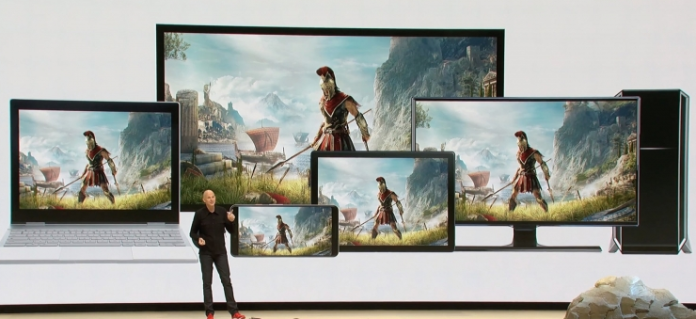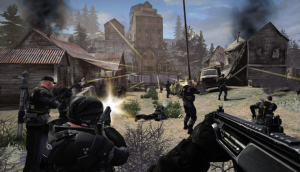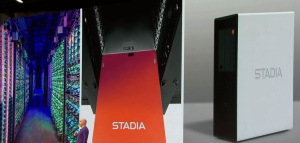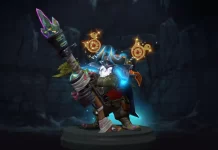Google shocked the entire gaming community with the announcement of the Google Stadia streaming gaming platform. Games in the cloud have ceased to be an interesting concept or experiment of a company with resources. From now on it is a reality. We tried to imagine how they live there, in the “bright future”. And that is why, our resume editing service resume perk, their resume writer Melisa working for resume services are concerned with this issue.
March 21, 2019, will go down in history. At GDC 2019, Google unveiled its vision for the future of the entertainment industry. Its name is Stadia. According to the Internet giant, the future is about streaming. Although it was not the first to think about it.
First steps
After all, many tried. Take at least Gaikai. At the GDC 2009, David Perry announced that the future lies in cloud computing and the physical distribution of content will die faster than we think. The prediction has not come true to this day. Despite all the assurances that the Internet was already quite developed, the platform did not float its boat: not every developer/publisher was ready to send his brainchild to the cloud, and the delay even with good connection quality left much to be desired. The comfort and simplicity of playing on PCs and consoles for the cloud were unattainable. However, Gaikai did not sink into oblivion, but was bought by Sony and became the basis for the PlayStation Now, which works to this day.
But let`s go back to the past. In 2009, simultaneously with Gaikai, OnLive was announced at the same GDC. In addition to the service itself, the developers also offered a miniature set-top box, thanks to which, in principle, there was no need for a PC. The fate of the platform is similar to the fate of Gaikai – it was bought by Sony. But if the latter was reborn into Playstation Now, then OnLive just quietly closed. Looking ahead, we should note that some of its ideas returned to Google Stadia streaming: the “picture in picture” mode or recording interesting moments that can be published right there.
And this is not to mention smaller applicants, for example, the domestic Playkey. Although here, it is clear that there is no talk of any revolutionary technologies and worldwide coverage – the scale is not the same. An original vision is offered by the Israeli Playcast, which uses not the Internet, but cable TV networks for data transfer. Unfortunately, one can hardly find any information about it, except that it is alive.
At the beginning of the decade, it was OnLive and Gaikai that propelled cloud gaming solutions forward. It was a bumpy road, on which beautiful promises were faced with technical limitations and the quality of connection with end-users. However, the first services did the main thing – they showed that this is generally possible. You just have to wait for the development of the World Wide Web and a larger player.
The future is coming
The bison of the Google scale took up the topic for the first time. And it is thanks to the enormous resources and technical infrastructure that spans the whole world that Stadia can get what its predecessors did not succeed. Thousands of data center with millions of servers – if Google cannot make the game in the cloud a reality, then who can?
But if it can, then this will certainly turn our minds on how we consume games. First of all, of course, the delivery time of the product to us will be even more reduced. Modern projects take up a lot of space on your hard drive – you are no longer surprised at the size of fifty gigabytes. You can’t fit your entire library on your drive, and while you download the desired game, several hours will pass. And even if you bought a disc, you can’t get anywhere from the patches of the first day, which are by no means small. Google Stadia streaming solves both problems: saw the game – clicked “Play” – and go. The user always has access to the most current version, it would be an Internet connection.
But Google wants to go beyond quick access to the game. First of all, incredible opportunities open up in terms of multiplayer. The cloud is a place to bring together hundreds and thousands of people. Agree, an interesting idea for the royal battles. On a map of the scale of some large MMORPG and with thousands of users you can arrange unforgettable battles. Now only EVE Online can provide such a scale, but the colossal battles of thousands of ships there, due to the high computational load, turn into almost turn-based battles.
Therefore, for each Google Stadia streaming user on the “other side”, at least one machine with a computing capacity of more than 10 TFlops will be allocated – one and a half times more powerful than the Xbox One X. It is the “minimum” – for processing complex visual scenes or simulating an advanced physical model in work turn on additional stations. Google promises that the technical characteristics of user systems will no longer be a barrier to developers.
Stadia pays a lot of attention to the creators – both games and near-game content. One of the tools allows, for example, a couple of clicks to apply the selected art style to the created geometry. Machine-based artificial intelligence will instantly decorate your world based on the uploaded image. Magic! Amazing opportunities await fans to stream the game. Stadia will allow you to transfer control to one of the viewers at the touch of a button, connect it to your game or share a “snapshot” of the gaming moment that other users can not just watch, but start and go by themselves. There are many such “ors”.
Tough questions
It sounds fantastic, but for that, it is the initial presentation – Google outlined endless possibilities with an enormous reserve for the future. And this future will come not sometime, but already this year. The presentation was so surprised that some legitimate questions even flew out of my head. However, letting down easy, one can already think about potential difficulties that somehow have to be overcome.
The most obvious question: what connection quality is needed? It is not only and not so much about speed, but about stability. The game is not a ready-made video, buffering during loading will not help here. The response should strive for an instant, and any interruptions or artifacts of the flow will immediately spoil the impression. Digital Foundry tested the current version of Stadia in Assassin’s Creed Odyssey via a Wi-Fi connection, and a stable response rate fluctuated around 166 ms. For a single game, even dynamic, it’s normal, but for competitive multiplayer projects, this is hardly acceptable.
And owners of tariffs with limited traffic, in general, can immediately pass by. Yes, Google Stadia streaming promises output up to 4K at 60 shots/s, but in this mode, the hourly traffic consumption is 20 GB! While you defeat the boss in Dark Souls, you spend half of the monthly reserve. The problem seems far-fetched only from the height of cheap unlimited Internet in some countries like Russia – in the US where Google primarily targets its platform, the cost of access is much higher, and limited tariffs are much more common.
Speaking of prices – what about the payment? The company will answer this question later, but it will probably be several subscription options with different access levels. The better you want quality, the more power Google will spend on you, the higher the price. If you fantasize, then the constructor would look interesting. Let`s say, 1080p and 60 shots per second is desired, but not more than 50 hours a month – an individual approach to each! Let`s see, if there will be a free mode? You enjoy the bloody frenzy at DOOM Eternal, and suddenly, right in the middle of the action, a ten-second cat food ad comes on. A-A-A-A-A, RIP AND TEAR!
And will any unprecedented power repel any desire to optimize the code? The developers are already somewhat “spoiled”: actual projects that produce the same picture as games five years ago may require twice as powerful hardware. The market is full of graphics cards and fast memory to pull, so why bother?
Where we go next?
Just above, we mentioned for good reason that we will “consume games.” With one-click accessibility, you cannot call it otherwise. But what about those same lamp rituals? When you came home with the treasured box, you inserted the disk into the drive, froze in anticipation. With the transition from boxes to digital stores, part of this sweetheart sacred action has already fallen off, and with the transition to the cloud, the fragile illusion that we own purchased games will completely collapse. Any problems with the connection – and we immediately lose our entire library. Yes, it is not ours already, stop lying to yourself.
Once upon a time, games were not taken seriously, but at the same time, the community of gamers was akin to a closed club, a brawl for their own. Over time, the barrier eroded more and more, and Stadia finally demolished its debris. Yes, this reminds one of the senile grumbling of a person for whom acquaintance with games began with cartridges for Dendy and the installation of Commander Keen and Doom from a pack of diskettes. But what to do – it`s about age.
The future is beautiful in that it will come once, but for now, you can live your usual life. But only in the case of Stadia, it will not be “once”, but already now, this year. Google will definitely shake the market, and it is both inspiring and scary.
However, such a voluminous and clumsy machine as the modern gaming industry will not change course instantly. Consoles in their classic form will live at least one more generation, gaming PCs will still be assembled, which means that the games themselves will be created with an eye on stationary systems. Well, who just didn’t “kill” the traditional platforms for the entire time of their existence, and they are still more alive than all the living!
And this means that Stadia’s incredible power and networking capabilities were used half-heartedly at first. The full potential of the platform will be revealed by the exclusives that are being prepared by the new Google gaming division – Google Stadia streaming Games and Entertainment.
Anyway, we live in an interesting time. For the first time in many years, it is impossible to predict with certainty what will happen next. The market has not seen such a revolution, probably since the very first generation of consoles. Even without going into technical details, on a superficial level, Stadia seems like a colossal phenomenon. Let’s see what this phenomenon will bring.









![Unblocked Games 66 at School [January 2020 – Updated] unblocked games 66 at school](https://www.virteract.com/wp-content/uploads/2017/03/unblocked-games-66-at-school-100x70.jpg)

